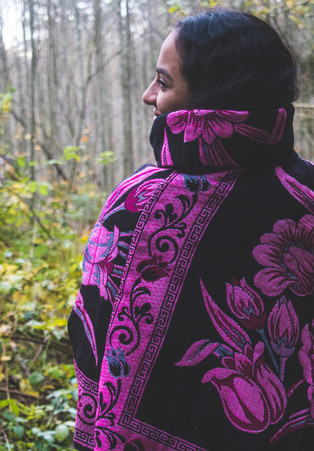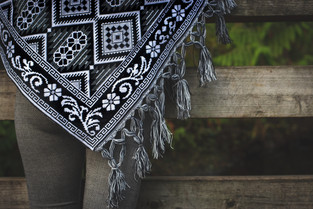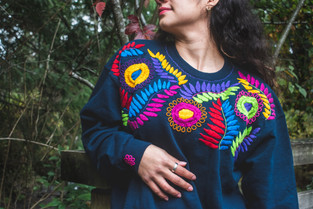Embroidery: Traditions in textiles.
- Patty
- Mar 3, 2021
- 2 min read
Updated: Mar 25, 2021
The textiles of Mexico have a long history. The making of fibers, cloth, and other textile goods has existed since at least 1400 BCE. Fibers used during the pre-Hispanic period included those from the yucca, palm, and maguey plants and the use of cotton in the hot lowlands of the south. After the Spanish conquest of the Aztec Empire, the Spanish introduced new fibers such as silk and wool and the European foot-treadle loom. Clothing styles also changed radically. Fabric was produced exclusively in workshops or in the home until the era of Porfirio Díaz (1880s to 1910) when the mechanization of weaving was introduced.
Today, fabric, clothes, and other textiles are both made by craftsmen and in factories. Handcrafted goods include pre-Hispanic clothing such as huipils, gabans, and sarapes, which are often embroidered.

Mexico is famous for its fiesta, colors, and flavors, and its embroidery work represents these elements. Hand embroidered clothing can take between 20 and 50 hours per piece to be completed by an artisan. Using different tools and techniques, they weave thread by thread to form a piece of clothing.
Our textiles at Queen de mi Corazón are sourced from San Cristóbal de la Casas, Chiapas, a beautiful rural, hilly village in central Mexico. Local artisans hand-weave using different techniques, creating fabrics, murals, and tapestries with intricate colors and patterns. Some of these textiles are used to cover their religious statues, such as Virgins draped with native blouses and tunics, and they are part of their rituals and practices.
The region of Chiapas hides a beautiful unspoiled beauty of a dense jungle surrounding mesoamerican cities and a heritage full of art and craftsmanship, and it is nowadays one of the most famous sources and destinations for hand embroidery. However, it is not the only place where you can find these beautiful work in Mexico other states such as Hidalgo and San Luis Potosí.
To create these unique pieces, the artisans first make their designs on paper before translating them to fabric and hand embroidering each one.You might just see embroidery to the untrained eye, but if you look a little closer, you will see that each piece tells a story, the story of the hands that wove it.

Check out this wonderful video to learn more about the process of hand embroidery from Hidalgo, Mexico.
Sources: Text: Wikipedia. All images © Patty Zavala Photo

















































Comments